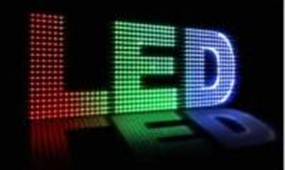LEDs are one of the most ubiquitous electronic products on the market today, thanks to their efficiency, small size, and incredible versatility. They boast applications as varied as status indicator lights, horticulture, and high-definition displays. And while they’ve become so common that we hardly notice them anymore, we’re still finding new LED applications, developing new technologies, and making frequent breakthroughs. In fact, the LED market is still growing at an exceptional rate, especially in Southeast Asia, India, and Europe (where 2018 annual growth was nearly 10%). So, what’s new for LEDs? Let’s take a look.
The Latest LED Technology: Multicolor LEDs
It was only recently that we finally achieved the elusive blue LED, opening the possibility of full-spectrum LED arrays. Just this year, scientists have developed a technique that allows for a single LED to produce all three primary colors. This has big implications for active LED displays, which normally require three to four tiny, individual LEDs placed near each other to render the full spectrum. Before long, we may start seeing LED displays made up of color-tuned LEDs.
What’s more, the new LED technique ― doping the gallium nitride with a rare earth element called europium ― is compatible with current GaN-based LED technologies. We commonly see GaN-based LEDs at work in commercial solid-state lighting, which means this advancement will have significant implications in the commercial sector going forward.
Reversed LED Cooling
Another exciting new development in LED physics is that we’re seeing researchers run LEDs in reverse to create a cooling effect. Recently a research team demonstrated that if you run LEDs backward ― rather than doing nothing, as one would expect from a diode ― you achieve a very short-range cooling effect to the tune of 6W/m2.
Researchers postulate that they could improve the cooling capacity to as much as 1000W/m2 in the future. This idea isn’t ready for practical application yet, but using the LEDs to draw heat away from the processor may lead to improved heat performance in wearables and mobile devices.
Horticultural Lighting
At the intersection between color-tuned lighting and LED temperature effects is an exciting story in the horticultural lighting space. A Belgian tomato-growers association called “Belgium’s Tomato Masters” used LEDs to stimulate plant growth. Instead of using the industry-standard high-pressure sodium (HPS) lights, the Tomato Masters outfitted its 13.3-acre indoor tomato farm entirely with LED lighting.
Their recipe, perfectly tuned to stimulate tomato plant growth, is a mix of red, far-red, blue, and white, which appears pink to the human eye. Their custom-built farm uses Hyperion fittings outfitted with Cree’s next generation XLamp XP-E2 for the red and far-red portion of the recipe (these new horticultural lamps are also in place in the UK and the Netherlands).
The Belgian team initially worried that due to LEDs’ high efficiency, the lights might not generate enough heat to keep the plants warm in the winter. But their first winter achieved sufficient results without activating the back-up heating system, proving again how developments in lighting tech reduce payback periods.
OLED Costs May Decline
One final exciting update is the development of lower-cost Organic LED (OLED) technologies. Organic LEDs, unlike typical LEDs, are made from thin sheets of material, which makes them ideal for use in displays. Unfortunately, due to their high manufacturing cost and relatively lower efficiency compared to single-point LEDs, OLED displays failed to take off in the lighting sphere. All that may be about to change, though: several companies are working on bringing the cost of OLEDs down, as well as developing new form factors for OLED technology, with a special focus on architectural lighting.
The Future of LEDs
Though LEDs have been around and in practical use for decades, they continue to be a source of innovation and important technological development. These new developments may soon lead to new and improved products in nearly every sector where we find LEDs. We’re especially excited about big breakthroughs in color tuning, both in terms of technique and application.

